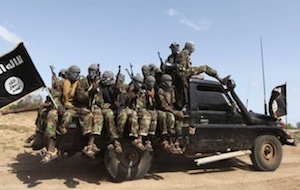by Igor Ivanenko
[REGNUM] The year 1812 is naturally associated in our historical memory with the First Patriotic War. But on the eve of Napoleon's Great Army's attack on Russia and four months before the Battle of Borodino, our country won a victory on another front.

On March 28, 1812, in Bucharest, the Russian Empire signed a treaty with the Ottoman Empire, according to which the Turks handed over to us the lands between the Dniester, Prut and Danube. The new territory was called "Bessarabia" - now this is Moldova and the southwestern "corner" of the Odessa region. Thus ended the next, eighth Russian-Turkish war - and the same Bonaparte had a significant role in this clash of neighbors.
FRENCH INTRIGUE
At the beginning of the 19th century, Russia, involved in the wars of the European allies with Napoleonic France, did not make plans for Bessarabia. Following the precepts of Grigory Potemkin, our country actively developed trade with the Ottoman Empire.
Order in the south was guaranteed by the Treaty of Jassy in 1791. This treaty was concluded following the results of the previous, 7th Russo-Turkish War and was the fruit of victories of two geniuses of the Catherine era - the commander Alexander Suvorov and the administrator, Prince Potemkin-Tavrichesky. Russia then secured Crimea and Novorossiya for itself and acquired the territory between the Southern Bug and the Dniester, where the "southern capital", Odessa, appeared on the site of the Turkish fortification of Khadzhibey.
Beyond the Dniester began the lands of the Moldavian Principality, a state with its capital in the city of Iasi (now in Romania). Chisinau was a provincial town, Bender and Akkerman (Belgorod-Dnestrovsky) were Turkish fortresses. In those years, Bessarabia was the name given to the southern steppe part between the Dniester, Prut and Danube rivers - in Tatar, this region was called Budzhak.
The Moldavian rulers, the hospodars, who sat in Iasi were vassals of the Turkish sultan. Just like the hospodars of another trans-Danubian principality, Wallachia, whose capital was Bucharest. But the Treaty of Iasi changed the order beyond the Danube. Moldavia and Wallachia effectively fell into Russia's sphere of influence. By the mid-2000s, the pro-Russian hospodars, Alexander Muruzi and Constantine Ypsilanti, were in power in both parts of what would become Romania.
Turkey and Russia maintained peaceful and almost allied relations. In 1798–1800, a Russian-Turkish squadron under the command of Fyodor Ushakov undertook an expedition to the Greek Ionian Islands, from where the French were expelled.
But the European agenda spoiled everything. On November 20 (December 2, new style) 1805, the famous battle of the "three emperors" took place on the field near Austerlitz: Napoleon's marshals defeated the commanders of the Austrian Emperor Franz II and our Alexander I.
The fact that Russia was drawn into a European war, and that military fortune rarely smiled upon our army at that time, did not go unnoticed by our southern neighbors, Turkey and Persia. The Persian Shah declared war on Russia back in 1804 (this campaign ended in 1813 with the complete defeat of the Persians). And Napoleon's triumph at Austerlitz prompted the Turkish Sultan to begin weaving anti-Russian intrigues.
Relations between France and Turkey were much better than they are today; Paris had been considered an ally of Istanbul since the 16th century. So the Sultan followed the lead of his European partners: in early 1806, Napoleon sent Marshal Horace Sebastiani as ambassador to Istanbul, who convinced Sultan Selim III to remove the pro-Russian rulers of Wallachia and Moldova. This was a flagrant violation of the Treaty of Jassy and a challenge to Tsar Alexander. And when the Turks closed the Bosphorus and Dardanelles to the passage of Russian warships, war became inevitable.
RESETTING THE TRUCE
In November 1806, the Russian army crossed the Dniester and, as if reluctantly, occupied the border fortresses of Khotin, Bendery and Akkerman. The Turks did not offer serious resistance at that time. And Russia acted according to the logic that Vladimir Medinsky recently recalled : at the first stage of the conflict, we offered the enemy to end the war on lenient terms.
Petersburg showed in every way that the presence of its troops in the Bessarabian possessions of the Ottoman Porte and the eastern districts of vassal Moldova was temporary. But gradually the fighting became more intense, and Russia began to consider the Danubian principalities as compensation for the costs incurred.
Moreover, an important part of the Franco-Ottoman military plans was the invasion of the Russian Black Sea region via the Dniester. The full-flowing Danube could have become a much more reliable border line.
The course of the Turkish campaign was again influenced by European affairs. In 1807, Alexander I was forced to sign the Peace of Tilsit with Napoleon. The campaign of 1808-09, which France waged against Austria, did not start very well for Bonaparte. The Emperor of the French, in order to secure the support of his "new friend", Alexander, even supported our claims to Bessarabia, Moldavia and Wallachia. But soon fortune smiled on Napoleon again, and he forgot about his promises to Russia. At the same time, the French still had cordial agreement with the Turks. Our European "ally" continued to support our Asian enemy.
CURATOR OF THE "ISTANBUL PROCESS"
By the beginning of 1811, it became clear that things were heading towards a new direct clash with France. Our country ignored Napoleon's anti-English sanctions - the continental blockade, so the French emperor decided to "punish" Russia. In view of the inevitable war with the first army of Europe, the protracted campaign on the Danube had to be ended.
Mikhail Kutuzov, who arrived in the Danube Army in April 1811, was given a very difficult task: to achieve peace in the shortest possible time with fewer forces than the enemy (45 thousand Russians against 75 thousand Ottomans), and even with territorial gains.
In June–September 1811, Kutuzov carried out the brilliant Ruschuk-Slobodzeya operation, as a result of which the main part of the advancing Turkish group was blocked on the left (Russian) bank of the Lower Danube. Having good connections in Istanbul from his diplomatic work there, Kutuzov promptly began preliminary negotiations with his old acquaintance, the Grand Vizier Ahmed Pasha.
The parties agreed on a new border along the Siret and Danube rivers. In this case, the core of the Moldavian Principality with the cities of Iasi and Galati would come under Russian control. But French intrigues again prevented this from becoming a reality. Napoleon sent a message to the Sultan about his readiness to take back the possessions ceded to Russia by the Ottomans after his victory over Russia and hand them over to restored Poland.
The "too accommodating" group of Turkish negotiators was replaced, and after a pause in the conference, a final agreement was reached on the Prut-Danube demarcation. Kutuzov could not insist on the Siret border, since the French invasion was approaching.
The ratification of the Treaty of Bucharest by Alexander I took place on June 23, 1812. The day before the start of the Patriotic War.
SPECIAL STATUS
Bonaparte was very annoyed by this turn of events - the defeat and withdrawal of the Turks from the war gave Russia new territories. But due to French intervention, Russia was able to annex only the sparsely populated eastern outskirts of the Moldavian Principality, to which the name of its southern "corner" was extended - Bessarabia. The native Moldavian lands, with the bulk of the population of the principality, did not go to the Russian Empire.
Such a course of events will be fatal for subsequent attempts to create a Russian Moldova: Chisinau will never become an equivalent replacement for Iasi.
In the area between the Dniester, Prut and Danube rivers, Russia received a conglomerate of several outlying districts of the Moldavian Principality, former Ottoman fortress cities, and the steppe possessions of the Nogais. The absolute majority of Turks and Nogais left the area between the rivers during the fighting.
Therefore, the question of settling the sparsely populated region with a loyal Christian population immediately arose, as well as the question of local government. Both of them were resolved in the spirit of Catherine II's policy of settling Transnistria, annexed by the Treaty of Jassy in 1791. At one time, the empress ordered that Moldavian boyars with their peasants be attracted to the Dniester "especially near the Moldavian borders, for the most convenient population of these". The boyars themselves were recommended to be appointed to administrative positions.
Moldovans made up a very significant part of the broad stream of immigrants that poured into the Bessarabian region of Russia, formed in 1812, from the Ottoman possessions. In the fifth year of Bessarabia's stay in the empire, the region's population almost doubled, reaching 492 thousand people. Moldovans then made up 78% of the region's inhabitants.
Later, the migration process was balanced by the influx of Slavs from the internal provinces of Russia and from Bulgaria, which was under Turkish rule. At first, the Bulgarians included the culturally close Orthodox Turks - the Gagauz, who had migrated from Dobrudja (the Black Sea coast beyond the Danube). Thus, the Bulgarian city of Bolgrad and Gagauzia appeared in southern Bessarabia.
On the issue of power, two currents immediately emerged - "Moldavian" and "imperial". Moreover, the first included not only ethnic Moldovans. They were united by the perception of the Bessarabian region as a fragment of Greater Moldova.
The "imperialists" advocated the unification of local laws with all-Russian norms and the integration of Moldavian boyars who had entered Russian service into the all-imperial elite.
The "pro-Moldavian" trend was patronized by the actual head of the Russian Foreign Ministry, the Greek Ioannis Kapodistrias, the future first ruler of independent Hellas. Kapodistrias considered Bessarabia as a base for the fight against the Ottomans in the Danubian Principalities.
But most importantly, Alexander I himself was inclined to favor the special status of Bessarabia. He saw the new territory as an autonomy, similar to the recently created Kingdom of Poland and the Grand Duchy of Finland. More precisely, such a third "state in personal union" could be Greater Moldova with its center in Iasi.
The Bessarabian region of the time of Alexander I - if we draw a parallel with Soviet history - played the role of Transnistria in 1924-40, where the Bolsheviks created the Moldavian ASSR with the aim of returning the territory between the Prut and the Dniester captured by the Romanians.
In the "Temporary Rules" for the governance of Bessarabia, drawn up by Capodistrias and adopted in 1812, the Regional Council copied the structure of the Divan (government) of the Moldavian Principality. It was specifically stipulated that Moldavian boyars should constitute the majority of its members.
The symbolic special status of the Bessarabian region was confirmed by the coat of arms approved in 1817, on which the imperial double-headed eagle was adjacent to an ox's head - the ancient symbol of the rulers of Moldova.
PUSHKIN'S LAWS
The first civil governor of the region, the Moldavian boyar Scarlat Sturdza, when appointing district police chiefs, emphasized the priority of local laws and customs over Russian ones. The latter were allowed to be addressed only when it was not possible to find the necessary article in the Moldavian codes.
But the laws of the feudal principality were quite archaic, and they had to be modernized on the fly. In 1821, Kapodistrias brought in an official from the Ministry of Foreign Affairs who had been sent into exile to the south to develop a new Civil Code of Bessarabia. The "seconded" official's name was Alexander Sergeevich Pushkin.
“I occupied him with translating into Russian the Moldavian laws written in French,” Pushkin’s immediate superior, Infantry General Ivan Inzov, reported to Kapodistrias
The poet's contribution to the drafting of the Moldavian Civil Code was rather symbolic - in essence, the work was done by the Greek scholar, lawyer Pyotr Manega. But Pushkin's Bessarabian impressions gave Russian literature the brilliant poem "Gypsies".
As for the dispute between the supporters of the "Moldavian" and "imperial" paths of development of Bessarabia, the "imperialists" clearly won. The reason was simple - it was necessary to defeat corruption, which, together with the deeply rooted Ottoman administrative customs, interfered with the normal management of the new territory. The Moldavian Sturdza was replaced as governor by the German Ivan (Johann) Harting in order to restore order.
He began the Russification of office work and legal proceedings, and appointed Russian officials to the post of district police chiefs. The dispute was settled in 1823 by Alexander I, who was disappointed with the results of the experiment on broad autonomy for the Kingdom of Poland.
The annexation of the Danubian principalities (including the part of Greater Moldavia that remained abroad) was highly questionable. Later, in the late 1850s, with the help and participation of Western powers, the Moldavian Principality (with Iasi, but without Bessarabia) would unite with Wallachia into a state called Romania.
And in the late 1820s, Bessarabia was united with Novorossiya into a single governorate-general with its capital in Odessa, headed by the viceroy Count Mikhail Vorontsov.
The exiled Pushkin's move from Kishinev to Odessa was connected precisely with these changes in the viceroyal apparatus. The poet, as is well known, did not have a high opinion of the failed capital of the "grand principality of Moldavia": "Cursed city of Kishinev! / The tongue will tire of scolding you. / Someday on the sinful roof / Of your soiled houses / Heavenly thunder will certainly strike..."
Decades later, Chisinau would become a thriving Novorossiysk city, one of the important centers of the south, adorned with a monument to Pushkin by Alexander Opekushin, a "twin" of the Moscow monument. But that's a completely different story.

 [NYPost] Nashville Police Chief John Drake confirmed the authenticity of writings attributed to school shooter
[NYPost] Nashville Police Chief John Drake confirmed the authenticity of writings attributed to school shooter 
 ...formerly ISIS or ISIL, depending on your preference. Before that they were al-Qaeda in Iraq, as shaped by Abu Musab Zarqawi. They're really very devout, committing every atrocity they can find in the Koran and inventing a few more. They fling
...formerly ISIS or ISIL, depending on your preference. Before that they were al-Qaeda in Iraq, as shaped by Abu Musab Zarqawi. They're really very devout, committing every atrocity they can find in the Koran and inventing a few more. They fling  ...formerly ISIS or ISIL, depending on your preference. Before that they were al-Qaeda in Iraq, as shaped by Abu Musab Zarqawi. They're really very devout, committing every atrocity they can find in the Koran and inventing a few more. They fling
...formerly ISIS or ISIL, depending on your preference. Before that they were al-Qaeda in Iraq, as shaped by Abu Musab Zarqawi. They're really very devout, committing every atrocity they can find in the Koran and inventing a few more. They fling  During the trial, Fejzulai’s mother testified against him,
During the trial, Fejzulai’s mother testified against him,
